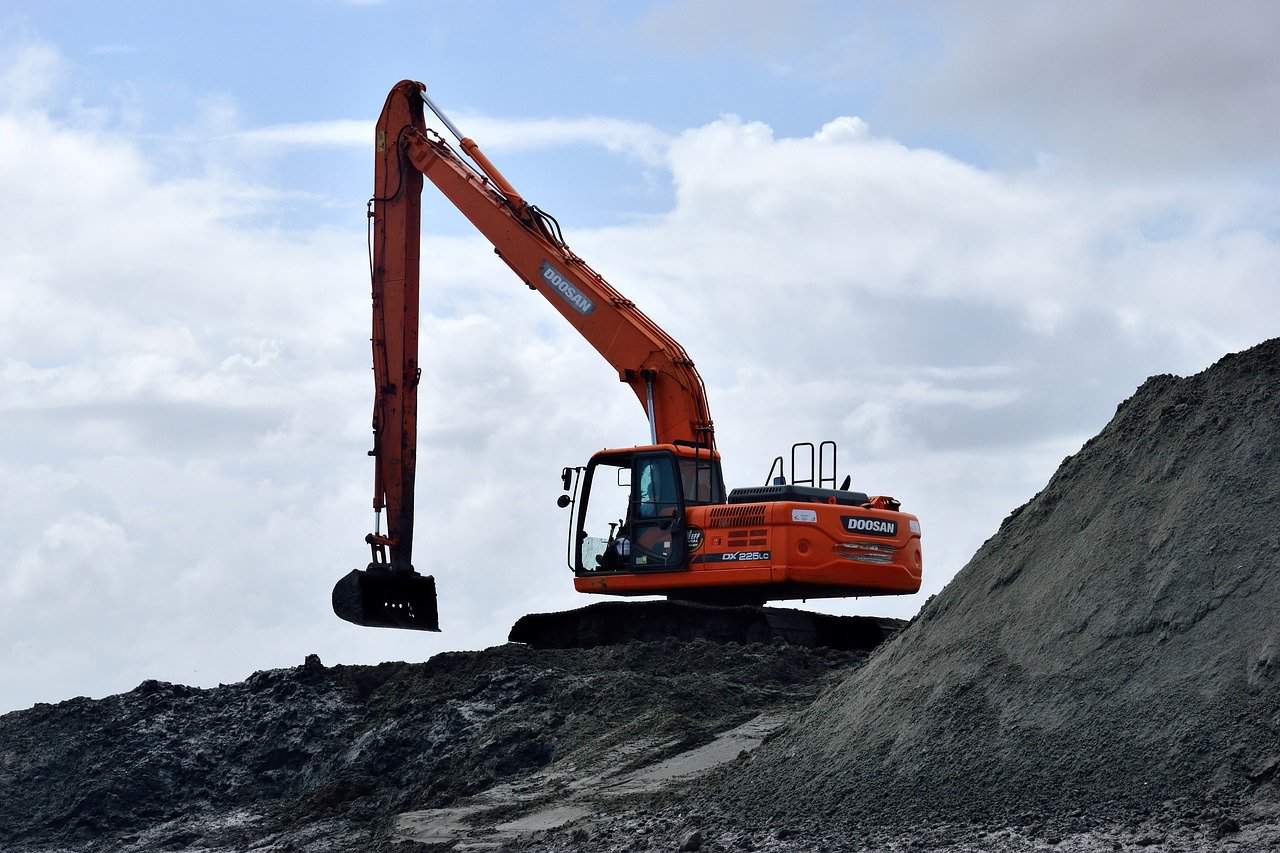Hydraulic cylinders can be used for any application where a strong push or pull force is needed. When they were first developed in the late 18th century they had multiple uses throughout the industrial revolution, as the increase of factories and production required numerous hydraulic applications. Nowadays, hydraulic cylinders are a key piece of equipment across a variety of industries, including construction, mining, manufacturing, and offshore sectors.
If your hydraulic cylinder or any other part of your system isn’t working as it should, contact CJ Plant Hydraulic Repairs today for a fast and efficient repair of the unit, so your operation can be back up and running as soon as possible.
What are the different types of hydraulic cylinder?
Single acting hydraulic cylinders
Single acting hydraulic cylinders work where push or pull force is needed, so the hydraulic fluid only acts on one side of the piston rod. Another force (like gravity, a spring, or the weight of the load) allows the cylinder to operate in the other direction.
Double acting hydraulic cylinders
A double acting cylinder pushes the piston rod into both the advance and retract directions by hydraulic operation.
Telescopic cylinders
Telescopic cylinders use a cylinder inside a cylinder to increase the distance that can be lifted in one stroke. The stroke refers to the amount of lift that a cylinder is capable of in one movement. Normally used in machines like tipping trucks, they can also be used within any fabrication that needs an increase in the stroke without increasing the space that is needed for the envelope.
Telescopic cylinders can be single or double acting. A possible problem is that a normal telescopic cylinder can have abrupt changes in speed, due to changes in volume size for the different stages of the cylinder. However, specialist engineering can produce dual acting telescopic cylinders that can move at a consistent speed.
Jack cylinders
Jack cylinders are mobile cylinders that can come in a variety of sizes. Typically, one hand pump can be used with several cylinder sizes, meaning that companies can select the best cylinder size for each job. Jack cylinders don’t have a mount, they are simply used on the floor. The normal lifting weights are 5 tonnes, 10 tonnes, 20 tonnes, and 50 tonnes.
The standard sizing and mobile nature of jack cylinders means they are ideal tools to hire if they are not needed regularly. In a lot of cases, instead of owning a hydraulic cylinder, companies will rent jack cylinders when they are required for a specific job.
How does a hydraulic cylinder work?
Pascal’s law demonstrates that:
Force= Pressure x Area
In a hydraulic system, the pressure is provided by a HPU (Hydraulic Pumping Unit). The area is the size of the hydraulic piston, and these two elements determine the force that can be exerted by the cylinder. So, the weight that can be lifted or pushed by a hydraulic cylinder is the same as the pressure given by the pump multiplied by the size of the cylinder rod.
The majority of pumps have a standard range; normally from 3000 psi to 10,000 psi (210 to 690 Bar). The average will usually be at the lower end of the range, around 210 Bar. A pump can lift an unlimited amount of weight, depending on the size of the cylinder. Increasing the PSI might take adjusting the seals, valves, and cylinder design to be able to handle the higher pressure. Also, the pump dictates the speed at which the cylinder can work, as it provides hydraulic fluid at the necessary flow rate.

